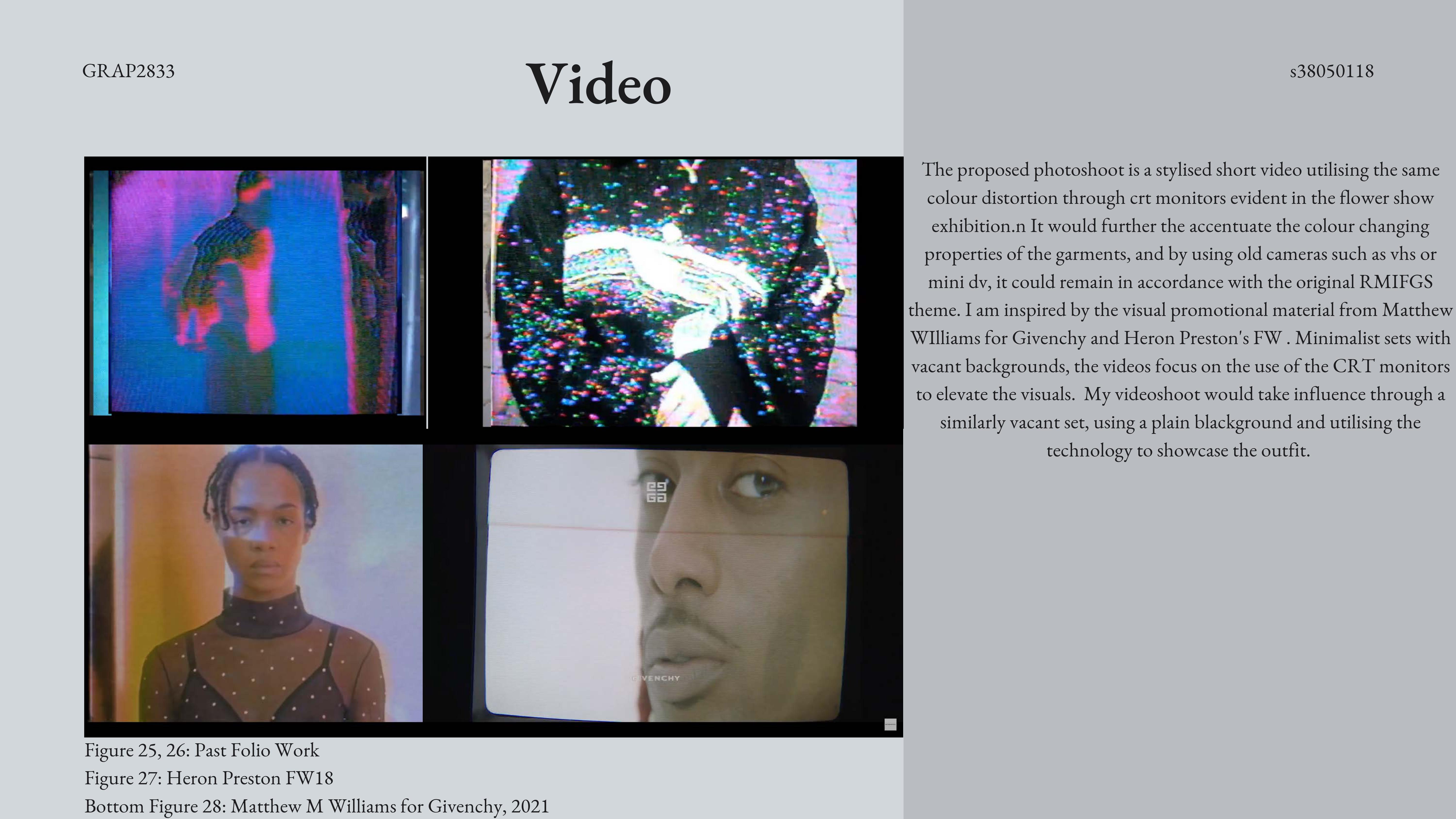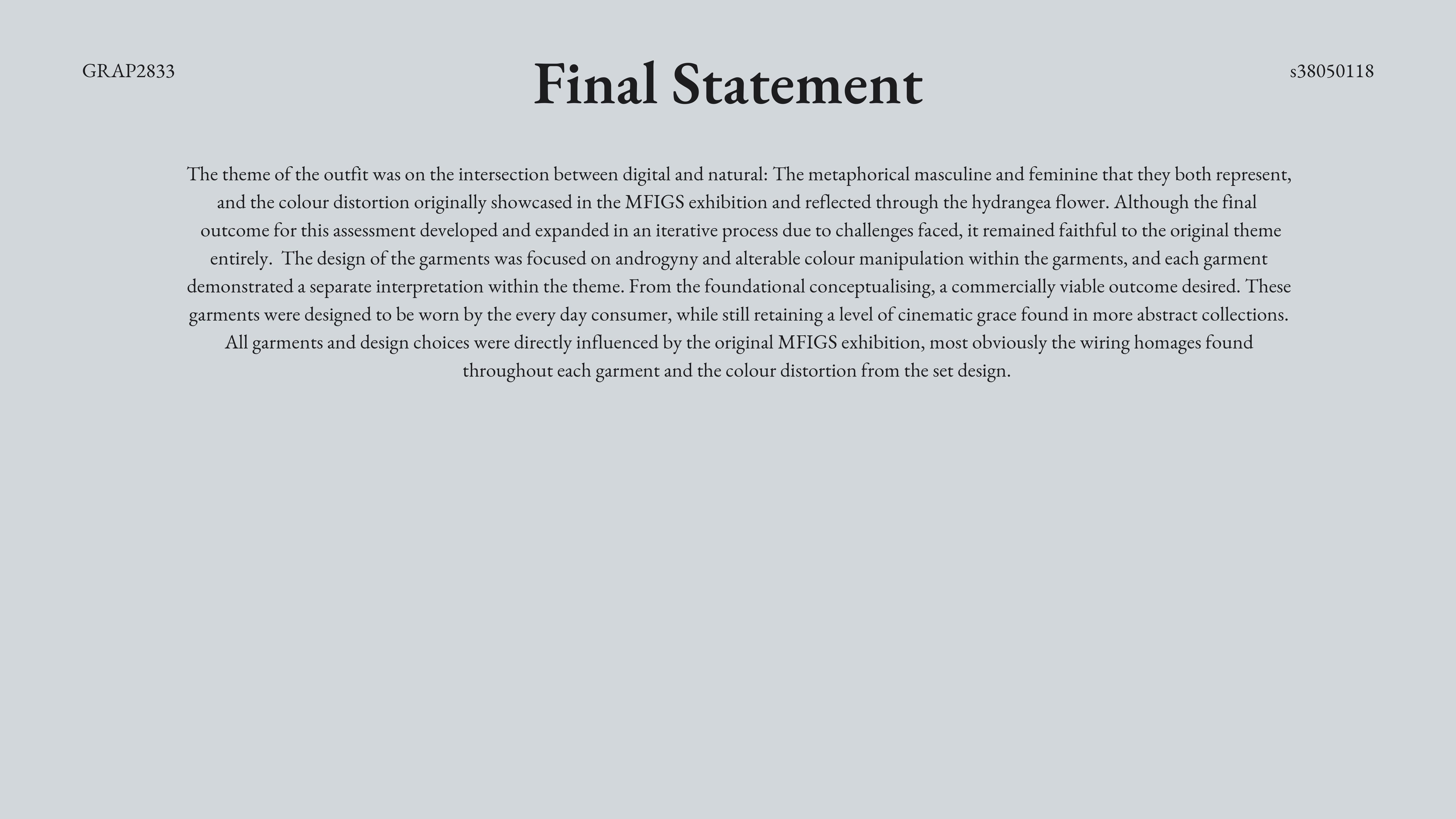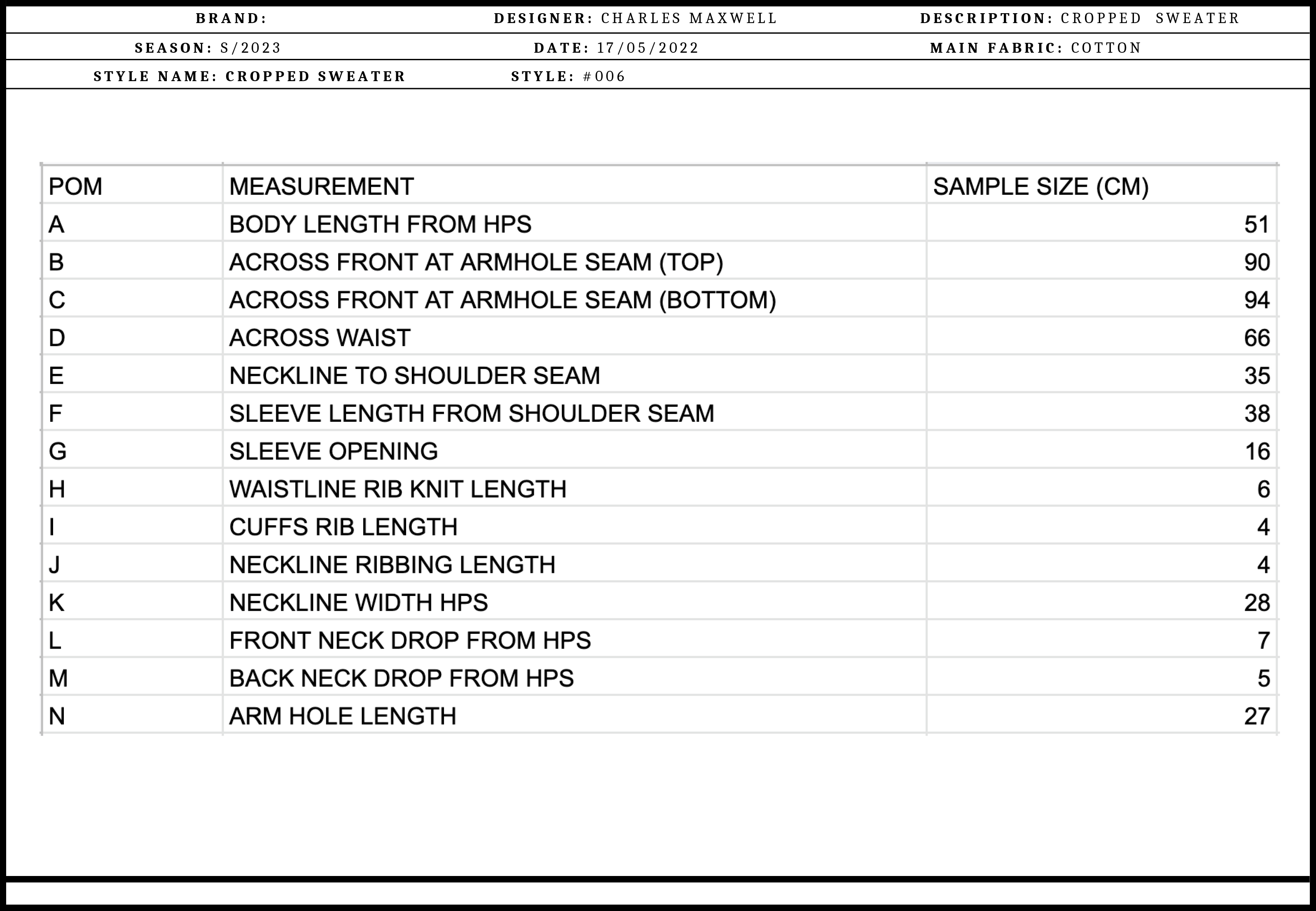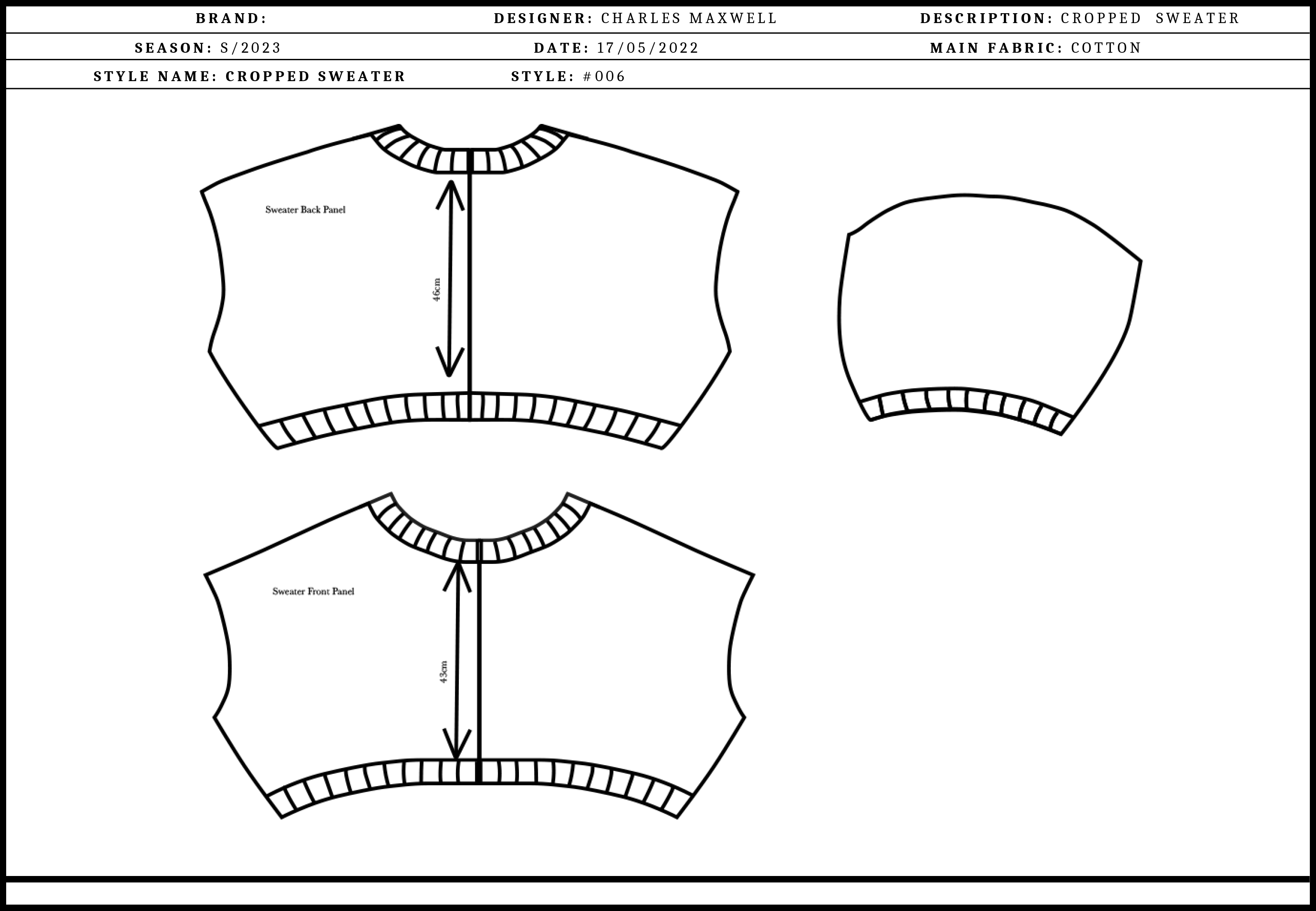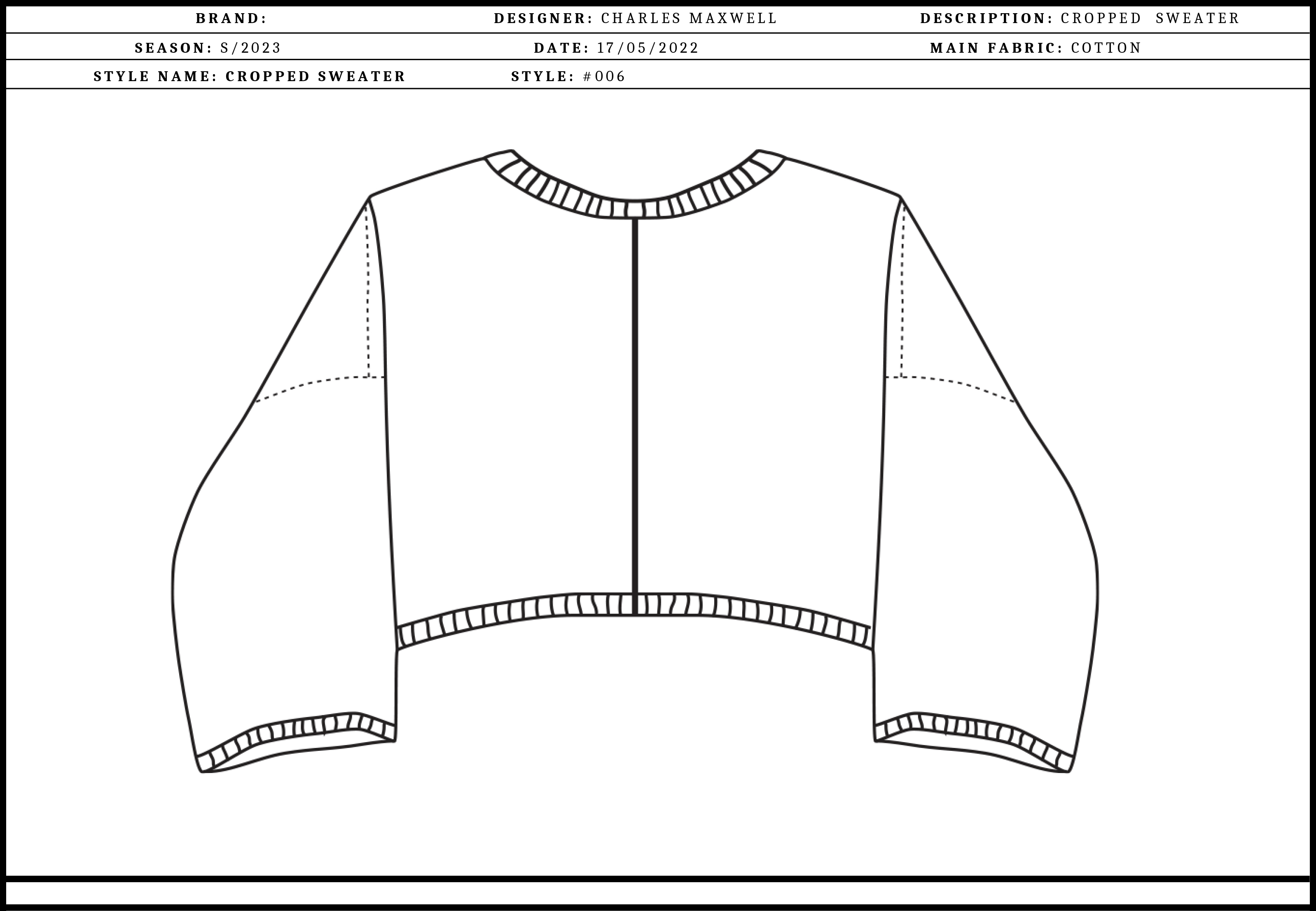Design Project 3
Garment Design
Technical Drawing
Tech Pack
Toiling
Garment Design
Technical Drawing
Tech Pack
Toiling
The outfit designed for this project was centred on the intersectionality of digital and natural, and how this could be expressed and explored through garment outcomes. The final prototype varies in some aspects when compared to the original
conceptualisation. This is due to adapting and modifying ideas to solve issues that
arose in the design and sampling process.
The original knit piece was conceptualised with exposed seams, however the external process of creating a knit with so many smaller panels was not able to be translated with any knitwear manufacturers. I circumvented this problem by hand stitching nichrome wire on the underside of the sweater, to ensure the thematic effect was still achieved.
The flared pants also underwent an iterative design process to create the final outcome; the thermochromic dye did not take to the cotton twill and the exposed seams were too explicit, and as such a second sample was created featuring iridescent reflective fabric in small panels to accent the wiring motif.
The balaclava was intended to be hand crocheted and distressed with exposed seams, however I overestimated my ability and was unable to complete it. As an alternative, I used merino fabric and drafted a pattern of a plain balaclava and created a sample. Following this, I designed one of several pattern pieces to accommodate the exposed seam design choice.
My three goals were in essence to collaborate effectively, to teach myself new skills and techniques within fashion design, and to problem solve. I believe the iterative design process of each garment for my outfit showcases the achievement of these goals, as self directed learning and overcoming many challenges throughout the assessment was integral to the successful outcome, and a collaborative process is what made many aspects possible.
The original knit piece was conceptualised with exposed seams, however the external process of creating a knit with so many smaller panels was not able to be translated with any knitwear manufacturers. I circumvented this problem by hand stitching nichrome wire on the underside of the sweater, to ensure the thematic effect was still achieved.
The flared pants also underwent an iterative design process to create the final outcome; the thermochromic dye did not take to the cotton twill and the exposed seams were too explicit, and as such a second sample was created featuring iridescent reflective fabric in small panels to accent the wiring motif.
The balaclava was intended to be hand crocheted and distressed with exposed seams, however I overestimated my ability and was unable to complete it. As an alternative, I used merino fabric and drafted a pattern of a plain balaclava and created a sample. Following this, I designed one of several pattern pieces to accommodate the exposed seam design choice.
My three goals were in essence to collaborate effectively, to teach myself new skills and techniques within fashion design, and to problem solve. I believe the iterative design process of each garment for my outfit showcases the achievement of these goals, as self directed learning and overcoming many challenges throughout the assessment was integral to the successful outcome, and a collaborative process is what made many aspects possible.










